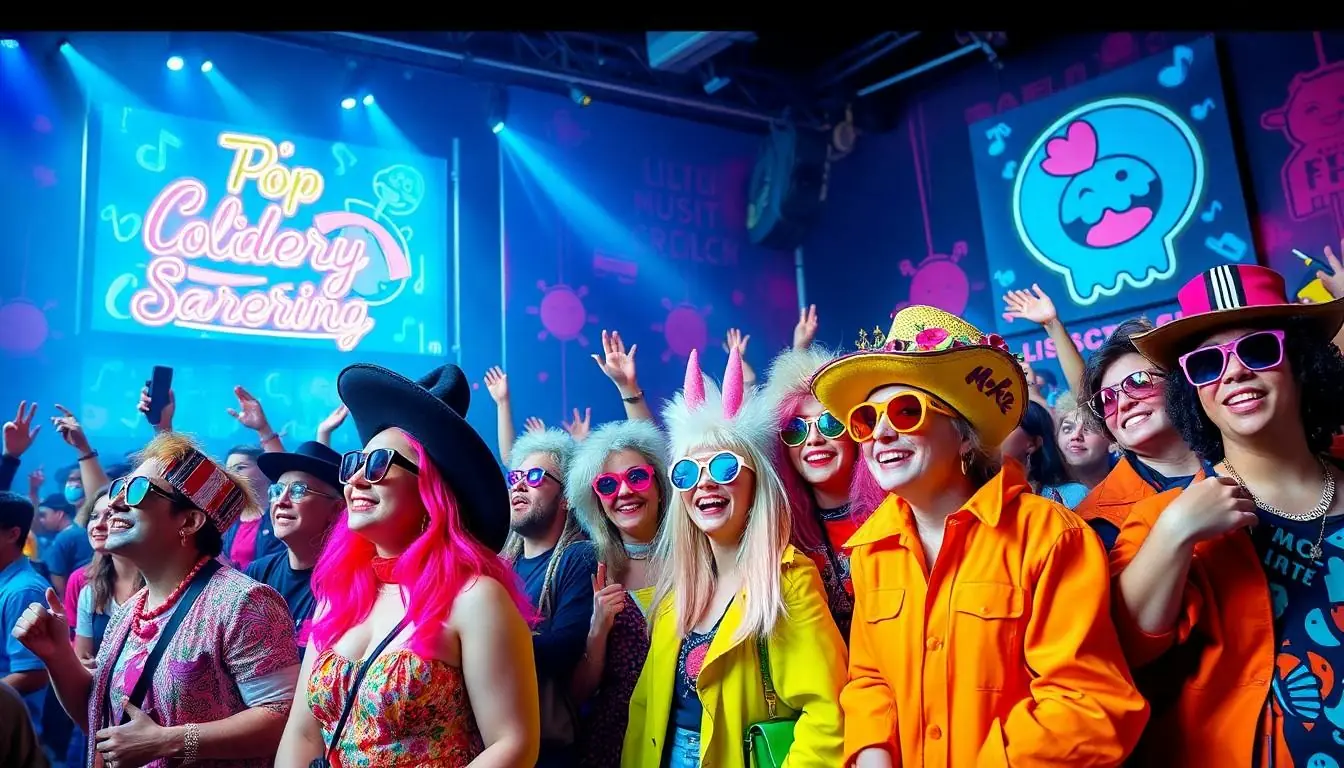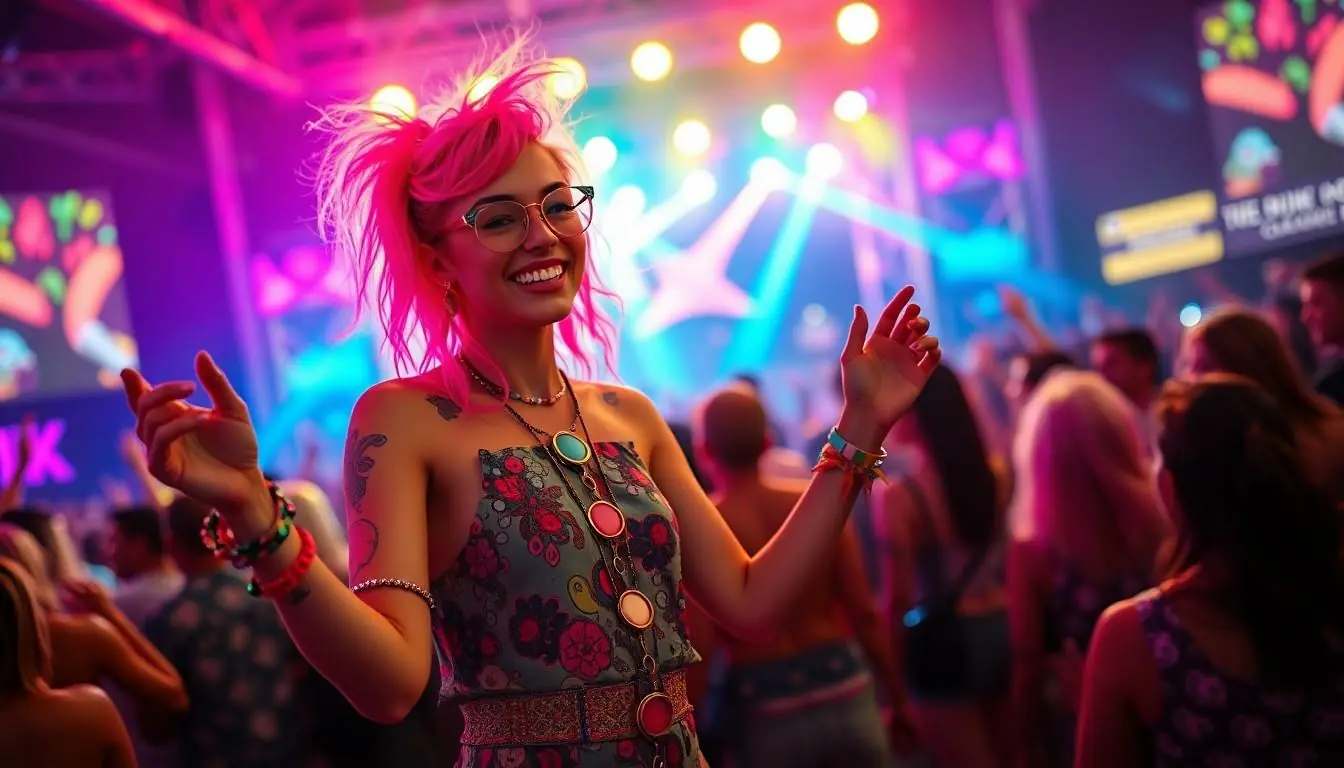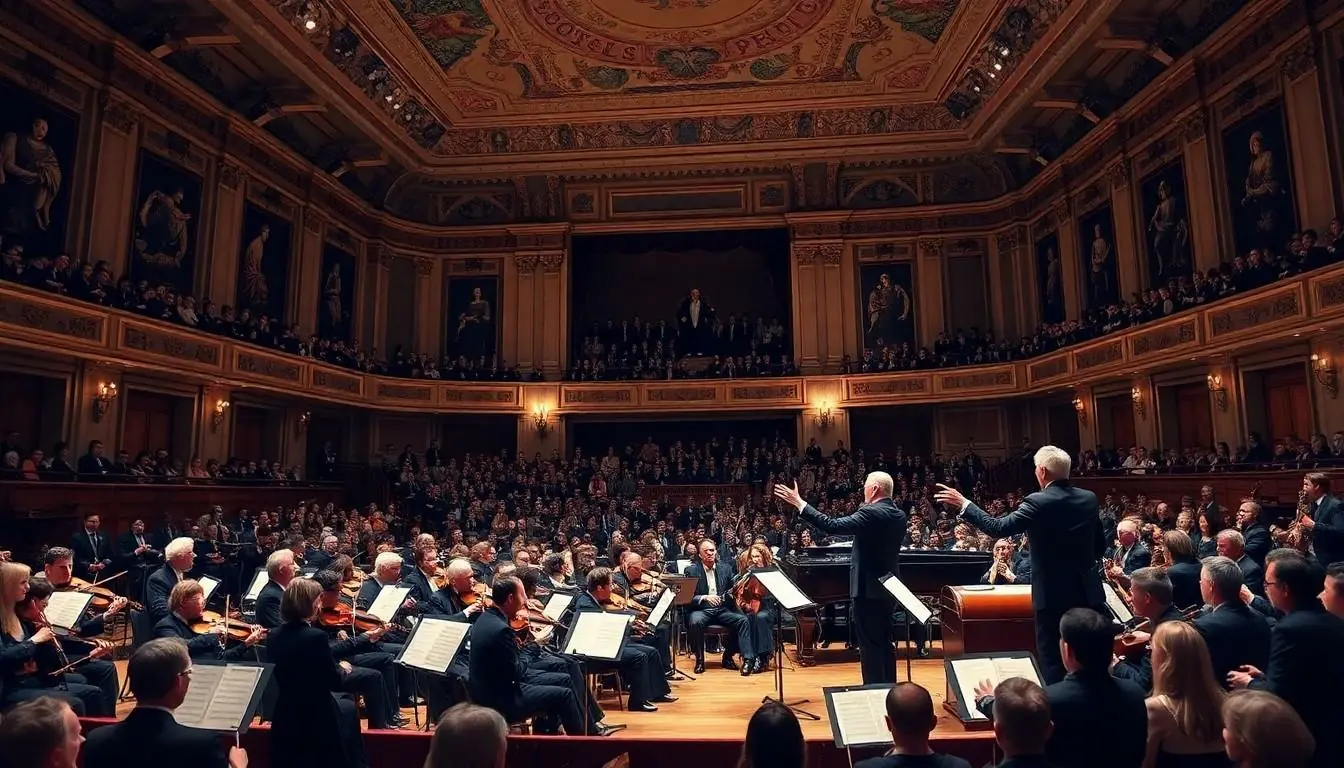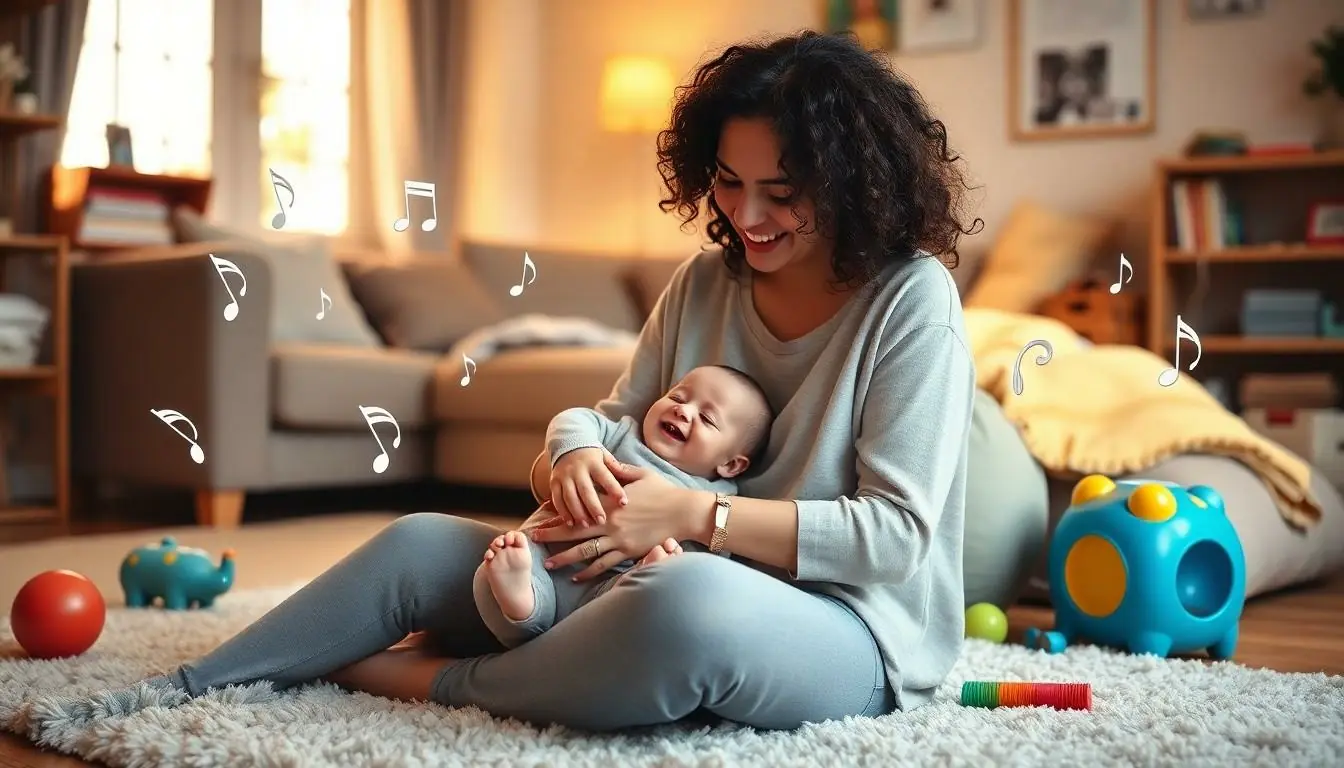Pop music aesthetic isn’t just a genre; it’s a vibrant lifestyle that colors everything from fashion to social media feeds. Imagine a world where neon lights pulse in sync with catchy hooks and every outfit feels like a music video waiting to happen. This aesthetic has become a cultural phenomenon, captivating fans and setting trends that ripple through society.
Table of Contents
ToggleOverview of Pop Music Aesthetic
Pop music aesthetic encapsulates a dynamic cultural movement characterized by vibrant visuals, catchy melodies, and a high-energy atmosphere. It influences fashion choices, social interactions, and even visual art, creating a multisensory experience for fans. Colorful outfits and bold accessories often define the styles seen at concerts and music festivals, reflecting the joyous essence of pop music.
Social media plays a crucial role in amplifying this aesthetic. Platforms like Instagram and TikTok allow users to share their interpretations of pop culture, showcasing dance challenges, fashion inspiration, and music clips in real-time. This interactivity fosters a community where fans actively participate and redefine trends.
Iconic artists drive the pop music aesthetic forward. Performers like Ariana Grande, Dua Lipa, and Harry Styles continually reshape expectations in music and style, blending genres while experimenting with visuals. Their influence extends beyond music to merchandise and collaborations, showcasing their brand and aesthetic.
Distinctive elements within the aesthetic include bright colors, nostalgic references, and playful imagery. Neon lights and retro themes often dominate music videos, creating a sense of escapism and fun. Additionally, catchy hooks and relatable lyrics resonate with listeners, bridging generational gaps and solidifying the genre’s appeal.
Finally, pop music aesthetic evolves constantly. Trends shift quickly, adapting to cultural changes and new technologies. As artists and fans interact, the aesthetic flourishes, ensuring its position at the forefront of contemporary culture.
Key Elements of Pop Music Aesthetic

The pop music aesthetic embodies a vibrant and multifaceted culture that influences various artistic domains. Key elements include visual representation, iconic fashion trends, and distinctive sound characteristics.
Visual Representation
Visual representation in pop music often features bright colors and imaginative imagery. Neon lights frequently dominate music videos, creating an immersive atmosphere. Artists utilize playful graphics to enhance their storytelling. Additionally, album covers reflect nostalgia, drawing inspiration from past eras. Vibrant aesthetics create a sense of escapism, inviting fans into a whimsical world. Iconic imagery frequently accompanies social media campaigns, enhancing the connection between artists and their audience.
Iconic Fashion Trends
Fashion trends in pop music prominently include bold outfits and eye-catching accessories. Brightly colored ensembles captivate fans at concerts and festivals. Artists like Dua Lipa and Harry Styles employ unique styles that blend high fashion with everyday wear. Statement pieces, such as oversized jackets and platform shoes, define this aesthetic. Social media further amplifies these trends, inspiring fans to emulate their favorite stars. Playful combinations help express individuality, making bold fashion a vital aspect of the pop music experience.
Sound Characteristics
Sound characteristics define the pop music aesthetic with infectious hooks and catchy melodies. Traits such as upbeat rhythms and relatable lyrics resonate across generational lines. Production techniques often include synthetic sounds and polished vocals, ensuring a polished listening experience. Various subgenres coexist within pop, showcasing diverse influences from electronic and hip-hop elements. Listeners appreciate the ability to dance and sing along, creating an engaging atmosphere. Pop’s distinctive sound ensures its position at the forefront of contemporary music culture.
Influence of Pop Music Aesthetic
The pop music aesthetic exerts significant influence on various cultural dimensions, shaping trends and interactions.
Cultural Impact
This aesthetic promotes inclusivity and diversity, encouraging self-expression and acceptance among fans. Vibrant visuals, catchy melodies, and shared experiences forge connections across different demographics. Festivals and concerts become cultural celebrations that draw thousands, showcasing the genre’s pervasive reach. Observers note how LGBTQ+ representation significantly thrives within this aesthetic, creating safe spaces for expression and community. The art scene also benefits, as pop aesthetics inspire collaborations with visual artists, prompting innovative projects that blend music with visual storytelling. Examples like merchandise featuring unique designs highlight the crossover between music and visual arts.
Social Media and Branding
Social media platforms amplify pop music’s impact, serving as essential tools for artists to connect with their audiences. Instagram, TikTok, and Twitter provide venues for fans to participate in the pop culture dialogue through videos and posts. Artists leverage these platforms for branding, presenting curated images that resonate with trends. Engaging with followers through behind-the-scenes content fosters a sense of intimacy while enhancing their brand identity. Campaigns showcasing stylish outfits and catchy snippets from performances garner immense visibility, as algorithms favor engaging content. This interaction not only strengthens fan bonds but also shapes the pop music aesthetic, driving its evolution in real-time.
Evolution of Pop Music Aesthetic
Pop music’s aesthetic is rooted in a vibrant history, evolving through different cultural moments. The genre emerged in the 1950s and 1960s, heavily influenced by rock and roll, rhythm and blues, and Motown. This period introduced catchy melodies and exuberant performances that laid the groundwork for future pop artists. During the 1980s, the rise of music videos transformed visual representation, with artists like Michael Jackson and Madonna pushing boundaries through elaborate styles and storytelling. As technology advanced, the 1990s and early 2000s saw a blend of genres, bringing diverse influences into mainstream pop.
Modern interpretations of the pop music aesthetic reflect current cultural dynamics and technological innovations. Present-day artists merge various genres, ensuring a unique sound and visual presentation. Collaboration remains key, with artists frequently working across borders and styles, enriching the pop landscape. Social media platforms facilitate direct connections between artists and fans, enabling rapid dissemination of trends and ideas. Additionally, contemporary fashion trends often borrow from historical influences while incorporating elements of streetwear and high fashion. This evolution emphasizes diversity and inclusivity, making pop music relevant and engaging for a broad audience.
The pop music aesthetic thrives as a vibrant tapestry woven from sound and visual artistry. It invites fans to immerse themselves in a world where music transcends mere entertainment, becoming a lifestyle that fosters community and self-expression. As artists continue to innovate and redefine boundaries, the aesthetic remains fluid and inclusive, resonating deeply with diverse audiences.
Through its colorful fashion trends and catchy melodies, the pop music aesthetic not only shapes cultural landscapes but also inspires creativity across various platforms. This dynamic movement is set to evolve further, ensuring that pop music will continue to captivate hearts and minds for generations to come.




